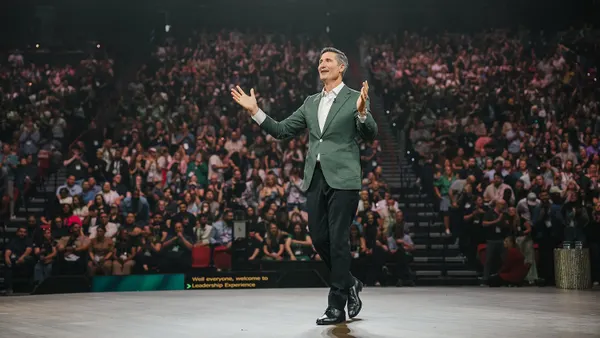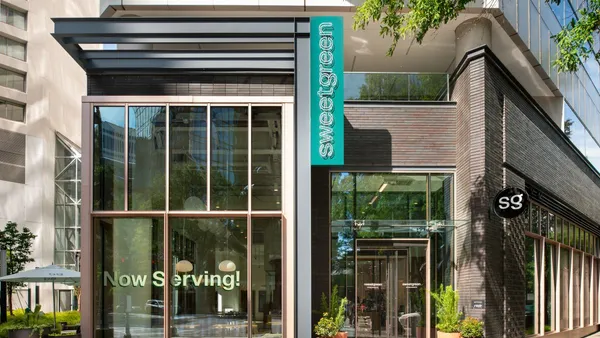Dive Brief:
- Over half of Americans eat a burger either at a restaurant or at home at least once a week, according to Technomic’s 2019 Burger Consumer Trend Report, but 46% of diners strongly agree they have seen burger prices increase at restaurants over the past year.
- The rise in price for the menu item stems from increased labor costs as well as limited growth in traffic, according to the report.
- Consumers are also becoming pickier when it comes to their burgers, demanding grass-fed, organic and plant-based options at an increasing rate, per the report. Forty-four percent of millennials who eat burgers expect restaurant to offer at least one plant-based burger option, per the report.
Dive Insight:
The demand for premium offerings like grass-fed, organic and plant-based means that manufacturers and restaurants may have to pay more to beef up their supply lines to source these unique products. Some restaurants may also see the opportunity to add a price premium for this different class of burgers.
Despite their elevated tastes, however, 59% of Americans are concerned about how much their burger habit will hurt their wallet, while only 35% of Americans strongly agree that they are willing to pay more for premium toppings, per the report. They also show a tendency to be loyal to one burger spot over another, with 42% staying true to their favorite restaurant.
One way that restaurants can combat burger loyalty, however, is by adding some of the premium offerings that consumers are demanding. This could lure a loyalist away while also helping them justify paying a bit more for their burger fix. Countless QSRs are hopping on the plant-based burger train, for example, including Carl’s Jr., White Castle and Red Robin, which is leveraging on the Impossible Burger to boost its sluggish sales.
But McDonald’s recent burger moves suggest something to the contrary, with the world’s biggest QSR scrapping its premium burger line while increasing the number of affordable items on its menus. The reason behind the drop isn’t related to a distaste for premium products, but McDonald's CFO Kevin Orzan said during a conference that the company's drive-thru times have suffered partly because of the introduction of premium items that take longer to make.
Instead of the time-intensive premium options, McDonald’s is betting on fresh beef, which still might feel like a premium or an upgraded option to some diners. Fresh beef is more expensive and presents different logistical challenges because it can spoil quickly or that inventory has to match almost perfectly with demand. But McDonald’s reported a bump in its market share for the first time in five years, and it attributes the growth to its fresh beef lineup.










